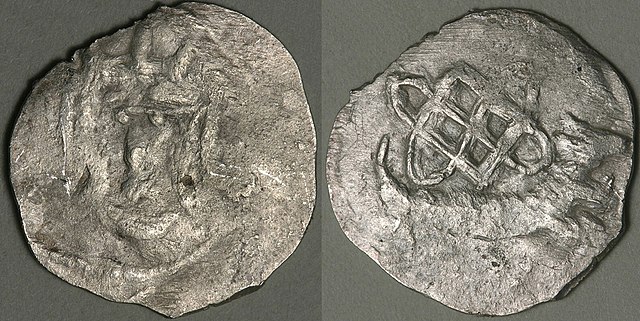Lithuanian Civil War (1389–1392)
The Lithuanian Civil War of 1389–1392 was the second civil conflict between Jogaila, King of Poland and Grand Duke of Lithuania, and his cousin Vytautas. At issue was control of the Grand Duchy of Lithuania, then the largest state in Europe. Jogaila had been crowned King of Poland in 1386; he installed his brother Skirgaila as ruler of Lithuania. Skirgaila proved unpopular and Vytautas attempted to depose him. When his first attempt to take the capital city of Vilnius failed, Vytautas forged an alliance with the Teutonic Knights, their common enemy – just as both cousins had done during the Lithuanian Civil War between 1381 and 1384. Vytautas and the Knights unsuccessfully besieged Vilnius in 1390. Over the next two years it became clear that neither side could achieve a quick victory, and Jogaila proposed a compromise: Vytautas would become Grand Duke and Jogaila would remain Superior Duke. This proposal was formalized in the Ostrów Agreement of 1392, and Vytautas turned against the Knights. He went on to reign as Grand Duke of Lithuania for 38 years, and the cousins remained at peace.

Jogaila, later known as Władysław II Jagiełło
Vytautas the Great
Jogaila, later Władysław II Jagiełło, was Grand Duke of Lithuania, later giving the position to his cousin Vytautas in exchange for the title of Supreme Duke of Lithuania (1401–1434) and then King of Poland (1386–1434), first alongside his wife Jadwiga until 1399, and then sole ruler of Poland. Born a pagan, he converted to Catholicism in 1386 and was baptized as Ladislaus in Kraków, married the young Queen Jadwiga, and was crowned King of Poland as Władysław II Jagiełło. In 1387, he converted Lithuania to Catholicism. His own reign in Poland started in 1399, upon the death of Queen Jadwiga, lasted a further thirty-five years, and laid the foundation for the centuries-long Polish–Lithuanian union. He was a member of the Jagiellonian dynasty in Poland that bears his name and was previously also known as the Gediminid dynasty in the Grand Duchy of Lithuania. The dynasty ruled both states until 1572, and became one of the most influential dynasties in late medieval and early modern Europe.

King Władysław II Jagiełło, detail of the Triptych of Our Lady of Sorrows in the Wawel Cathedral, Kraków
Early coin of the Grand Duke of Lithuania Jogaila with a lion, minted at the Vilnius Mint between 1386 and 1387
Seal of Jogaila with his title (in Latin) as King in Lithuania, used in 1377–1386, before becoming the King of Poland in 1386
Lithuanian Denar of Jogaila (minted in 1388–1392) with Vytis (Pahonia)





